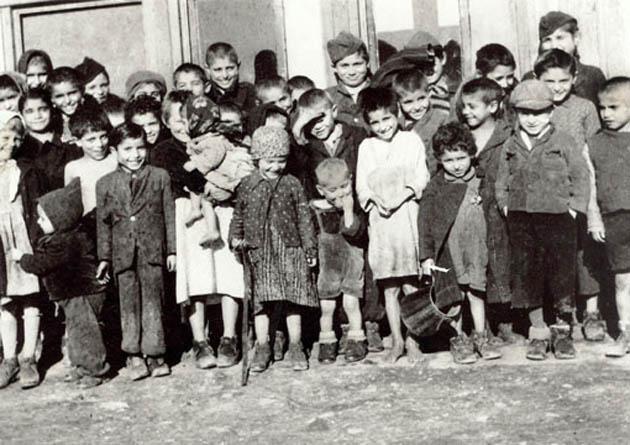Czech Institute for Study of Totalitarian Regimes: Instruction of WWII subject matter needs to be refined

At a press conference organized yesterday by the Institute for the Study of Totalitarian Regimes (Ústav pro studium totalitních režimů – ÚSTR), representatives of eight educational organizations presented their ideas for improving how the history of the Second World War is taught in the Czech Republic. Those participating in the discussion represented the organizations Antikomplex, Collegium Bohemicum, Československo 38-89, the Terezín Institute Initiative (Institut Terezínské iniciativy), the Museum of Romani Culture (Muzeum romské kultury), the Terezín Memorial (Památník Terezín), ÚSTR and the Jewish Museum in Prague (Židovské muzeum v Praze).
The ÚSTR said that while the 70th anniversary of the end of the Second World War this year has given rise to a wave of interest in the topic, the current instruction of this subject matter in the Czech schools is not able to respond to the discussions going on in society right now. Tereza Vávrová of the Antikomplex educational organization said it is key to view history, and especially the topic of war, from various perspectives.
"Multiple perspectives offer the pupils a beautiful resource for how to grasp this kind of material in particular," she explained. Jaroslav Pinkas, a curriculum designer for the ÚSTR, said: "The topic of the Second World War has decidedly not been forgotten by the schools, but we are arriving at a higher level of discussion now. This is no longer about whether this subject is being taught, but how."
The Museum of Romani Culture strives for a greater emphasis on the commemoration of the history of the Romani Holocaust in the Czech lands, which was probably one of the most thoroughly-performed genocides of the Second World War. The beginning of that genocide involved the establishment of the special "Gypsy camps" at Hodonín u Kunštátu and Lety u Písku in 1942.
Those camps gradually imprisoned about one-third of the 6 500 "Gypsies and Gypsy half-breeds" recorded by a census of Bohemia and Moravia. In March 1943 the prisoners of both camps and most of the Romani people who had retained their liberty up until then were transported to Auschwitz.
Of the roughly 5 000 Romani people from Bohemia and Moravia, approximately 600 returned from Auschwitz, which means they were almost completely annihilated. Europe-wide the Holocaust claimed hundreds of thousands of Romani victims.
The Romani Holocaust was not discussed in Czechoslovakia until after the fall of the communist regime and to this day is frequently not covered when material about the war is taught. This is probably linked to the negative attitude held by contemporary Czech society about Romani people, thanks to which such topics remain on the fringe.
In order to expand the information taught about the Second World War, teachers can used materials developed by the Collegium Bohemicum, for example, which are available at the www.skolademocracie.cz website. The Terezín Institute Initiative is also running a project called the Terezín Album, which accumulates information about Holocaust victims in the Czech lands and leads students to an understanding of the larger context of the Holocaust through the stories of individual people.
The Terezín Memorial is also contributing to education about the Second World War by organizing educational projects for youth from Bohemia and from abroad. In addition, the memorial designs teaching materials and methods; its "Schoolchildren in the Protectorate" project describes the regime in the Protectorate of Bohemia and Moravia through the example of what its schools were like.